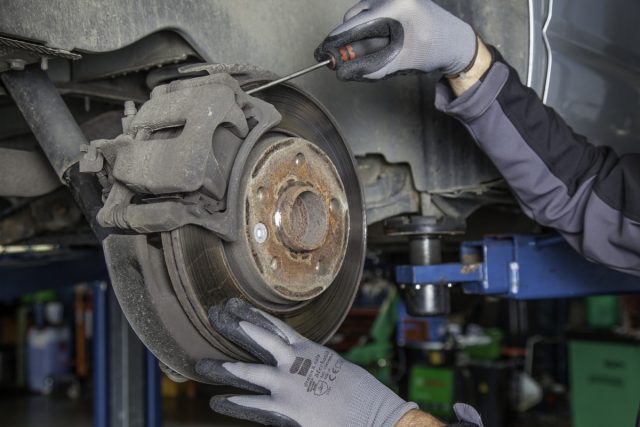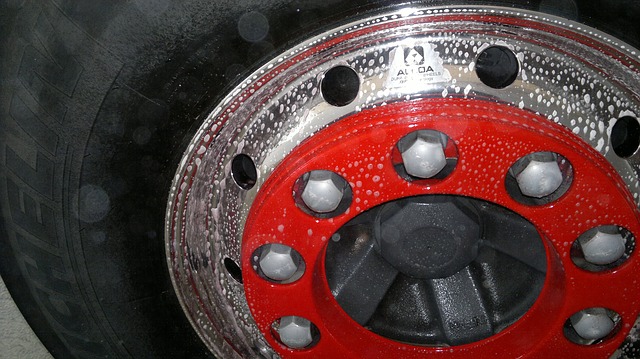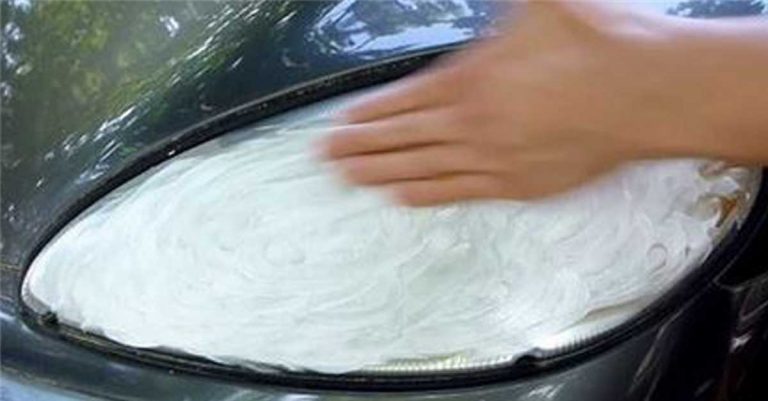One of the most important aspects when it comes to safety in our vehicle is the one referring to the tires, since they are the main point on which the entire weight of the car rests, in addition to adhesion, an essential fact to take into account the time to circulate. Therefore, in this article we are going to review all the necessary information on when to change tires.

As we have said, tires are a very important part of our cars, therefore, changing them or installing them is something that should not be taken lightly. For this reason, it is always recommended that the replacement of the tires (in this article you will find information on when to change the tires ) is carried out by people specialized in the subject.
But, before delving into the topic of when to change tires, it is important to refer to the rules established by the General Regulations for Vehicle Circulation in relation to the wheels of our vehicles.
- We cannot mount any type of tire on our car, since there are specific dimensions and specifications established by the vehicle manufacturer, which we must strictly follow.
- As is well known, all tire manufacturers create them with a series of patterns that ensure their adherence in different weather conditions. In these drawings there are grooves with a certain depth. The law specifies that, to circulate said groove must have, at least, a depth of 1.6 millimeters. In addition, it specifies that the grooves to which these measurements refer are the main bands that occupy almost the entire width of the tire, about three quarters.
- The regulation obliges tire manufacturers to have wear depth markers.
- It is also mandatory that the tires that we mount, even if they are retreaded, have the necessary information and that they do not have any type of deformity or breakage.
- Another aspect that the regulation does not allow to overlook is the level or pressure of the inflation. And it establishes that we must periodically check their pressure with approved tools so that the pressure indication is accurate.
Instructions
In this section we are going to see a series of instructions that will help us to know perfectly the tires that our vehicle has so that, when changing them, we continue with the factory specifications.
- The first rule that we must follow is not to forget the specifications that our vehicle sets for us when it leaves the factory. Changing the dimensions of the tires may cause us problems when placing them on the rims or that the power for which they are intended is not correct with our specific vehicle. Obviously, ignoring this rule can bring us dangers for driving as well as problems at the time of the periodic and mandatory technical inspection.
- To know the exact specifications of the tires of our vehicle, we must look at the side of them where their main characteristics appear. One of the data that we can find is the one that refers to their measurement. The numbering can be of the type 196/65 R 15 91 V. Let’s see what each of these numbers indicates.
- The 196specifies the measurement of the width of the tire in millimeters. This number can go from 125 to 335 millimeters. One thing to keep in mind is that when we replace it, it should not have a difference of more than 30 millimeters with respect to the ones we have replaced.
- The number that comes after /65, has to do with the height of the tire. This number is indicated in percentage mode. That is to say, this particular tire has a height of 65 percent with respect to its width.
- The letter R tells us that this is a radial tire, which is already common in all cars. That a tire is radial means that its inner layers are oriented starting from a central point.
- As we can see in the numbers that we have given at the beginning of these instructions, a number appears after the R, in our case 15. This number indicates, in inches, the diameter measurement of the inner rim of the tire. This number can go from 10 to 23. We must not go over the size of the tire that our factory vehicle mounts by 3 percent when changing it.
- The next number, 91, expresses the maximum load that it can support. There is a table where we can check the equivalence in kilos of the number that comes on our tire. When it comes to changing them, we cannot do it for ones that have a lower charge rate. Yes, we can replace them with ones that support a greater load.
- And finally, the final letter indicates speed. These letters can go from A, which indicates the lowest speed, to Y, which indicates the highest. The letter H, as an exception to the rest of the letters, indicates a speed of 210 kilometers per hour. As with weight, the choice of new tires should be the same or higher, but never less.
What do you need:
In this section we will focus on what we need to know about when to replace the tires of our vehicle. That is, we are going to give a series of reasons why you should consider changing them.
- After suffering a puncture (here we leave you an article on how to fix a puncture), our tire must be thoroughly checked by a specialized technician to verify that it has not suffered major damage due to it. If the damage were very serious, we would have to automatically replace said tire.
- As we have said before, the tires bring some wear marks. When these reach the limit imposed by the regulations, they must be replaced. We remember that this limit was 1.6 millimeters deep.
- We must also replace them if they show any signs of wear or aging. Obviously, there is no deadline to change them, because their wear will depend to a large extent on the ground on which we usually drive, our way of driving, the atmospheric characteristics of where we usually drive, the load to which we submit our vehicle etc Many manufacturers advise that after five years of use, we should inspect them once a year. And, in addition, they also advise that after 10 years they should be replaced, even if they have not reached the limit imposed by the 1.6-millimeter law.
- Another reason to change them can be caused by a strong impact against a stone or solid object on the road, or by hitting the side of the sidewalk in the city, a very deep pothole, that is, any cause that could have caused serious damage. in the same
- As a result of being misaligned, or that the vehicle has a mechanical problem, we may notice that some type of wear occurs in an area that is not normal due to driving. In this case, we must change the tire. To avoid these types of problems, it is always advised that we check the tires periodically.
- Sometimes we change the tires separately and we may put some with characteristics that are not appropriate for our vehicle. In this case, we should change these tires as soon as possible.
- A reason for change , rather, a golden rule, is that we should not put radial tires with others that are not. And as technical advice, if we did, which we repeat is not convenient, the correct way to place them is the radials in the rear axle and the non-radials in the front.
Tips
We offer you some tips to be clear when to replace the tires and what indications we should take more into account.
- The life of our tires will depend on the care we take with them. Let’s think that it is the only part of our car that is in contact with the road and, therefore, we must pay it the attention it deserves.
- We must pay special attention to balancing and alignment when placing them. Therefore, as we have said before, it is advisable that your change is made by specialists in this field.
- A care that we must maintain periodically is to control the pressure, in the following article you have information on how to measure the pressure. It is also advisable to check how the valves and the plugs that they carry are located.
- We saw in the previous point, that sometimes, we are forced to change one of the tires for various reasons, among which we can remember, a puncture, unusual wear of a certain part, strong impact or simply reaching the limit indicated by law.
- We should change it when ten years have passed from the manufacturing date. This date, together with the rest of the characteristics, can also be found on the side of the tire.
- In reference to this previous point, remember that we must follow the instructions of the vehicle manufacturer when installing tires. We explained above that there are intervals that must be compulsorily followed.
- When we are going to change the wheels, we must take into account not only the correct balance and pressure, but also check if the vehicle could present some type of mechanical failure related to the steering or suspension.
- As a general rule, if we are only going to replace two of the four tires, we must always place the new ones on the rear axle. The reason is that it is in this axis where greater control of the vehicle is needed.
- Do not forget something that we have repeated on several occasions, always make these changes in a specialized workshop. This will give us confidence and security when driving.
- We know that there are different qualities in tires. And these qualities are linked to the final price of the product, as is normal. We should, as far as possible, not opt for those of a very low quality.
- A tip to save on fuel is to opt for tires that have less friction.
- Depending on the area where we usually do our driving, we should choose those tires that are best suited to the characteristics of this site, temperatures, rain, snowfall, etc.
- And as with almost everything in life, search, compare and stay with those that offer you greater security and that meet all the specifications that the manufacturer of our vehicle provides us with.






